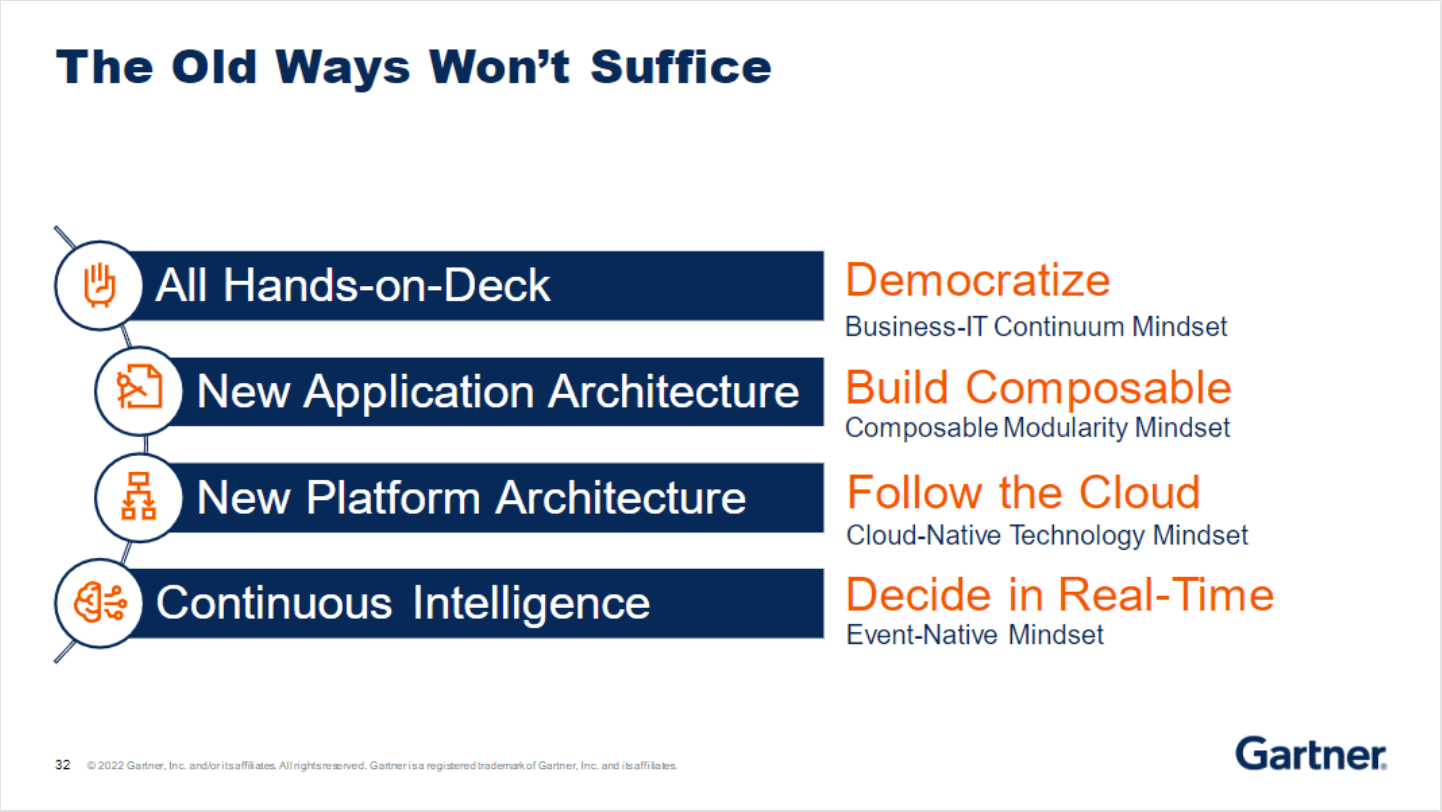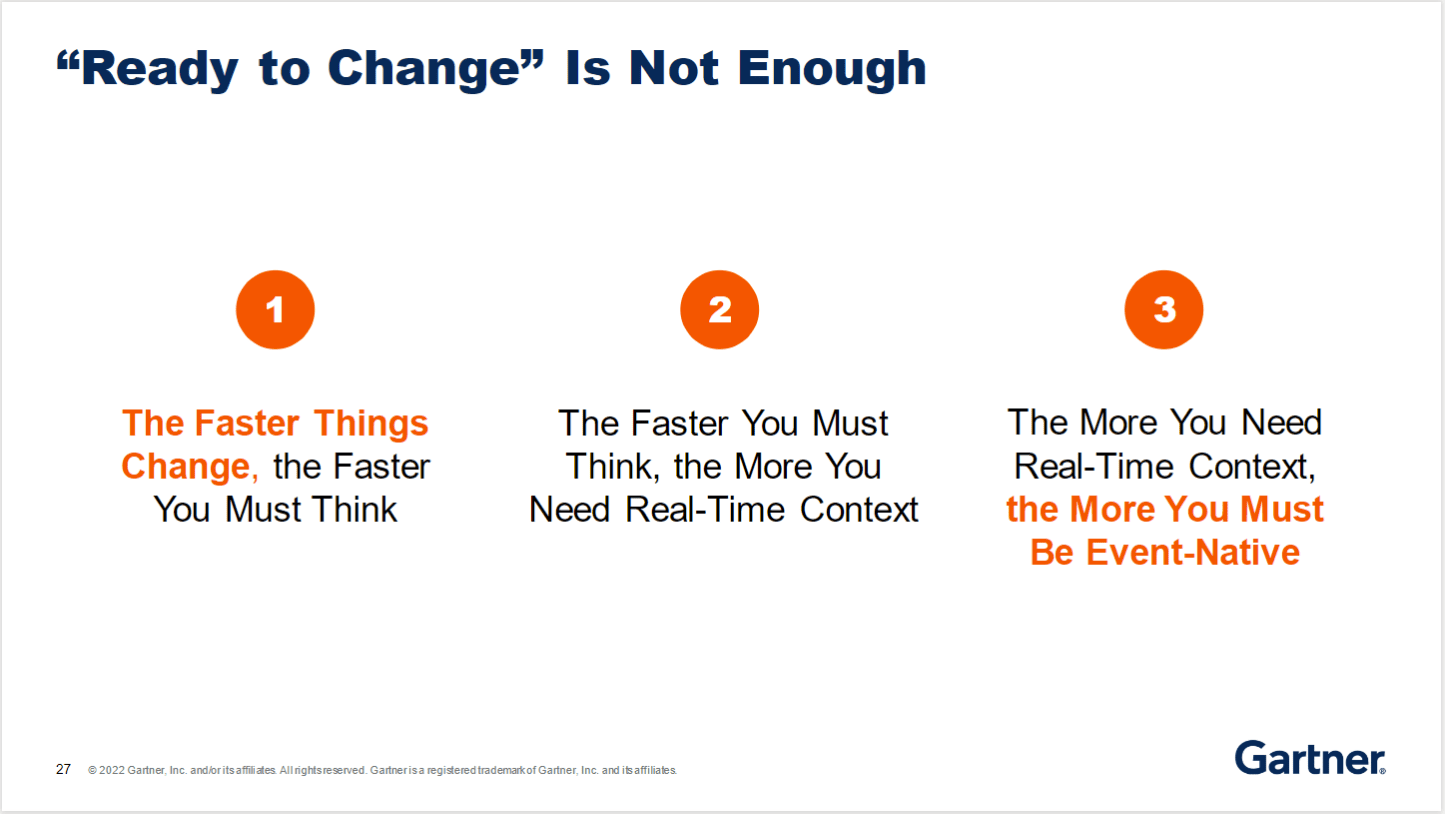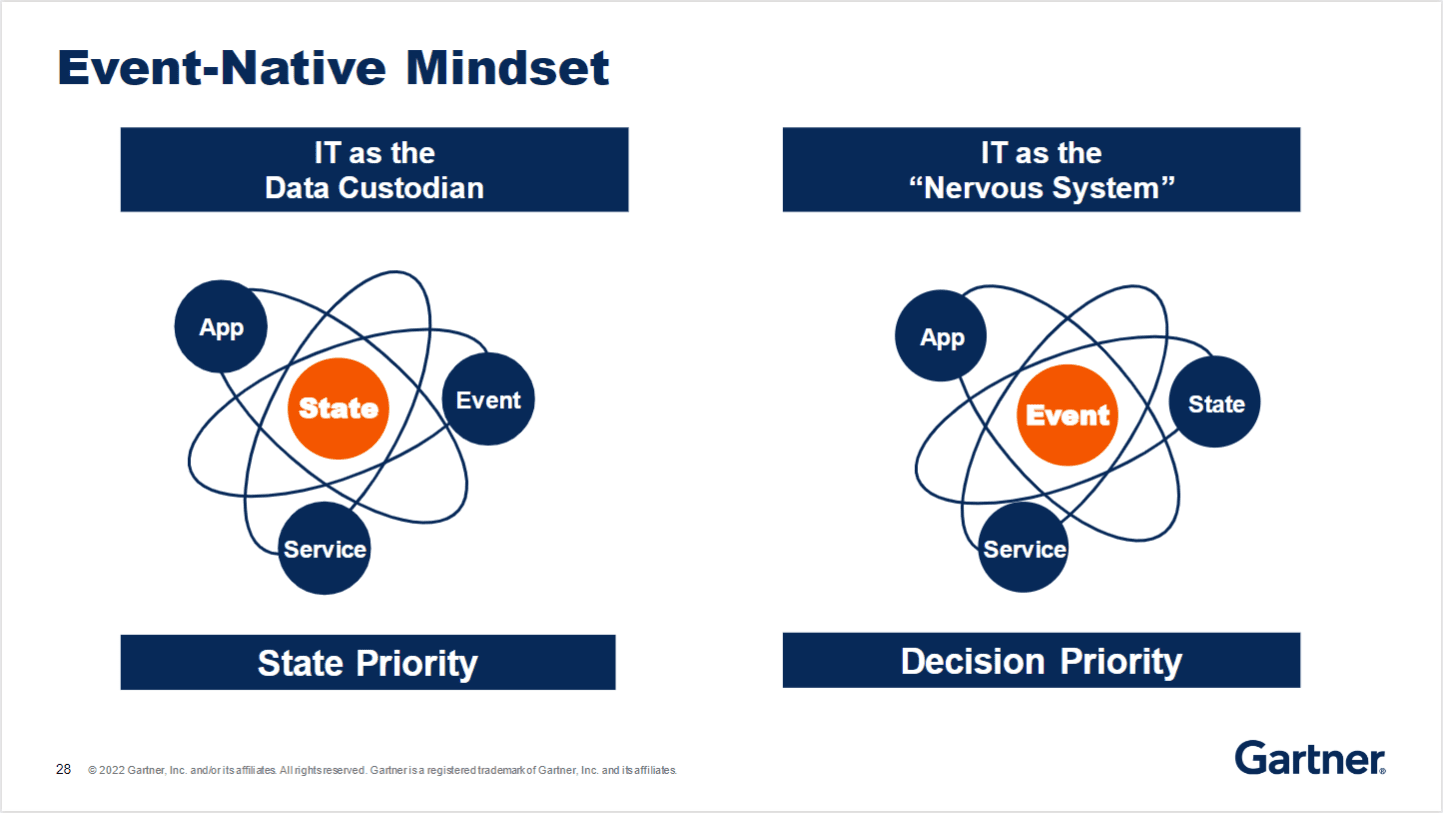I think it’s safe to say event-driven architecture is “having a moment!”
I’ve watched the application development & architecture market closely over the last 5 years and I would say interest is higher than ever before. One of my gauges for market interest is what Gartner is saying to their clients, particularly during their flagship CIO Conference: IT Symposium.
At this year’s events held over October and November around the world, EDA and event-thinking were front and center in the application architecture realm. In particular, a session titled “Strategic Trends in Application Platforms and Architecture”, presented by Yefim Natis brought forward a new emphasis on EDA: Event-Native Mindset.
In this session, Gartner noted a myriad of forces are driving change – change that affects applications, platforms, and organizations. They made it clear that old ways will no longer suffice and new approaches to applications and platforms must emerge.

Source: Gartner Symposium Presentation “Strategic Trends in Application Platforms and Architecture”, Yefim Natis, November 2022
The first of four new disciplines was centered around a “business-IT continuum mindset”.
Gartner noted that “67% of CEOs want more technology work done directly within business functions, and less in IT”1 and that “40% of boards of directors have moved digital-business-related budgets to business functions.” 1 This has led to the creation of business/IT fusion teams.
The key takeaway as that “Neither business nor IT can support the accelerating pace of business change along. Lead with the business-IT continuum mindset.” 1
The second discipline was about building for composability. This is something Gartner been talking about for a few years now. As business starts to take charge of its’ digital future, they are building applications as composable digital platforms with modular packaged business capabilities that are assembled & re-assembled to meet the needs of the business. This leads Gartner to its second key takeaway to “Lead with a composable modularity mindset.” 1
The third discipline is about how cloud is transforming business. This is nothing new, but Gartner notes that cloud is often both a platform (IaaS) and a solution (SaaS), and much innovation is taking place at a rapid pace. It is of no surprise then that Gartner’s third key takeaway is to “lead by adopting a cloud-native technology mindset.” 1
This leads us to the fourth and final discipline of change noted as a strategic trend – thinking in an event-native way. Gartner aptly noted that being “ready to change” is not enough. You need to be ready to spot the challenge and catch the opportunity in real-time, understand the context of the change(s) and actually decide to act, or make a change.
It was best captured in this slide:

Source: Gartner Symposium Presentation “Strategic Trends in Application Platforms and Architecture”, Yefim Natis, November 2022
Gartner outlined that in order to change in real-time, you must re-wire IT from being a data custodian, to being a nervous system for the organization, by “leading with an event-native mindset.”

Source: Gartner Symposium Presentation “Strategic Trends in Application Platforms and Architecture”, Yefim Natis, November 2022
Having an event-native mindset enabled by event-driven architecture can be underpinned by an event streaming and management platform like PubSub+ Platform.
To summarize, the strategic trends in application platforms and architecture identified by Gartner are primarily about building composable applications with business and IT fusion teams that are cloud-native and event-driven.
Explore other posts from categories: Business | For Architects

 Roger Sabourin
Roger Sabourin
